Niamh Fahey’s Retirement from International Football
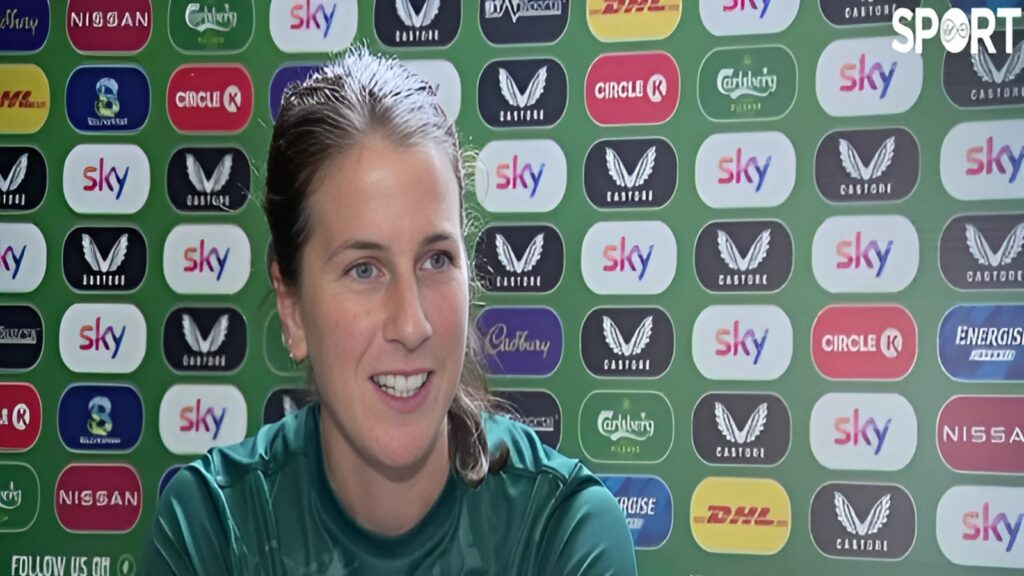
Niamh Fahey, one of Ireland’s most iconic footballers, has announced her retirement from international football at the age of 37. This decision marks the conclusion of an extraordinary 17-year tenure with the Ireland Women’s National Team, during which she earned 115 caps and competed on the global stage, including the 2023 FIFA Women’s World Cup. A Journey Beyond Expectations Looking back on her illustrious career, Fahey described her football journey as “beyond expectations.” She extended heartfelt gratitude to everyone who supported her along the way, particularly her family for their steadfast encouragement. Fahey’s humility and deep love for the game have solidified her status as a cherished figure in Irish football.“Football has given me so much, and I am truly grateful for the memories and friendships I’ve made along the way,” she shared in her retirement statement. An Exceptional Career Fahey’s final outing for Ireland was during a December 2024 play-off match against Wales. Unfortunately, the team fell short, missing out on qualification for the UEFA Women’s Euro 2025. Despite the outcome, Fahey’s leadership and unwavering dedication on the field reflected her enduring commitment to the team. On the club front, Fahey remains an integral part of Liverpool FC. Her extensive career has also included spells with Bordeaux, Chelsea, Arsenal, Galway, and her hometown club, Salthill Devon, further showcasing her versatility and exceptional skill as a player. Legacy and Leadership FAI Chief Football Officer Marc Canham joined many in celebrating Fahey’s immense contribution to Irish football. “Niamh Fahey is unquestionably one of the finest players to ever represent the Women’s National Team. Her leadership, passion, and dedication have left a lasting impact on women’s football in Ireland, inspiring countless young players to follow in her footsteps,” he said. Fahey’s influence extends far beyond her achievements on the pitch. As a pioneer in women’s football in Ireland, she has served as an inspiration, exemplifying what can be accomplished through determination, resilience, and a genuine love for the game. The Next Chapter Although her international career has concluded, Fahey’s passion for football remains as strong as ever. She continues to play for Liverpool, focusing on contributing to her team’s success and mentoring younger players. Her leadership and wealth of experience will undoubtedly continue to benefit the club and its future stars. As Ireland bids farewell to one of its most influential players, Niamh Fahey’s career stands as a shining example of excellence and perseverance. Her journey is a source of inspiration not only to those in the football world but also to anyone who admires her dedication and achievements. Celebrating a Legend Niamh Fahey’s retirement offers an opportunity to honour a career filled with historic milestones and unforgettable moments. From her debut for the national team to her appearance at the World Cup, Fahey has left an indelible mark on Irish football. As she embarks on the next phase of her life, her legacy will continue to influence and inspire for years to come.
Graham Potter Takes the Helm at West Ham: A Fresh Start for the Hammers

In a pivotal move for West Ham United, Graham Potter has been appointed as the club’s new head coach, succeeding Julen Lopetegui. This marks the start of a new era for the club as the 2024-2025 season progresses. The announcement has caught the attention of many, especially with West Ham preparing for their upcoming third-round tie against Aston Villa on Friday night. Graham Potter’s Coaching Journey Graham Potter has been a prominent figure in English football management, having previously led Swansea City and Brighton & Hove Albion. His work at Brighton earned him widespread recognition for his progressive approach to football. Known for his tactical flexibility and possession-based style, Potter gained a reputation as one of the Premier League’s brightest coaching minds. His ability to maximize the potential of a limited squad and instill a clear footballing philosophy made him a sought-after manager. Though his time at Chelsea was brief and marked by inconsistent results, Potter’s overall philosophy and experience remain highly regarded. He is recognized for fostering a positive team environment, prioritizing player development, and implementing tactical systems focused on possession and fluidity. This approach could be exactly what West Ham needs as they aim to elevate their performance and push for higher league finishes. Why West Ham Chose Potter West Ham’s decision to hire Potter comes after a turbulent period under Julen Lopetegui, who was unable to instill consistency or deliver the desired results. Despite a solid managerial career, particularly with Spain and Sevilla, Lopetegui’s tactics didn’t resonate with the West Ham squad, resulting in frustrating performances. With a focus on long-term success, West Ham’s board sought a manager who could bring stability and drive the club forward, which led them to appoint Potter. The hope is that Potter’s arrival will breathe new life into a squad that has under-performed. His tactical style, which emphasizes attacking football balanced with a solid defense, aligns well with West Ham’s ambitions of competing for European spots and challenging the Premier League’s top clubs. Players like Declan Rice, Jarrod Bowen, and Lucas Paqueta could all benefit from Potter’s methods. Challenges for Graham Potter While Potter’s appointment has been met with optimism, the new manager faces significant challenges. The immediate task is to turn around West Ham’s fortunes, particularly improving their league standing and performance on the pitch. The team has struggled with consistency in recent seasons, and Potter will need to quickly adapt his tactics to fit the squad’s strengths while also overcoming weaknesses.The upcoming third-round tie against Aston Villa will also be a key test for Potter, providing an early opportunity for him to make his mark. A strong performance in this match could give both the team and supporters confidence in his leadership. Potter’s Tactical Approach and Potential Impact Graham Potter is renowned for his tactical flexibility, often adjusting his systems to suit the opponent and available resources. At Brighton, Potter was known for experimenting with different formations, including a back three with wing-backs, while ensuring his team maintained possession and controlled the tempo of the game. His philosophy of playing out from the back and building attacks through midfield could help West Ham develop a more cohesive and dynamic attacking identity. What Lies Ahead for West Ham Graham Potter’s arrival places West Ham in a crucial phase of the season. The upcoming match against Aston Villa will serve as a litmus test for how quickly the players can adapt to his tactics. However, beyond this match, the focus will be on stabilizing the squad, building consistency, and pushing for a better league position.Potter will need time to implement his vision, but with the support of the West Ham board, he has the potential to create a successful future for the club. The pressure will be on, but if Potter can inspire the team and get them playing attractive, attacking football, West Ham’s fortunes could take a positive turn. Conclusion Graham Potter’s appointment at West Ham United signals a fresh beginning for the club. While there are challenges to overcome, particularly in terms of improving team performance and managing expectations, Potter’s tactical expertise and footballing philosophy offer hope for a brighter future. If he can lead the team to success and inspire consistent performances, Potter could become the long-term solution West Ham has been seeking. Fans and pundits will be eagerly watching as the former Brighton boss embarks on his journey with one of the Premier League’s most ambitious clubs.
The Rise of Indian Football: Key Milestones and Challenges in 2025
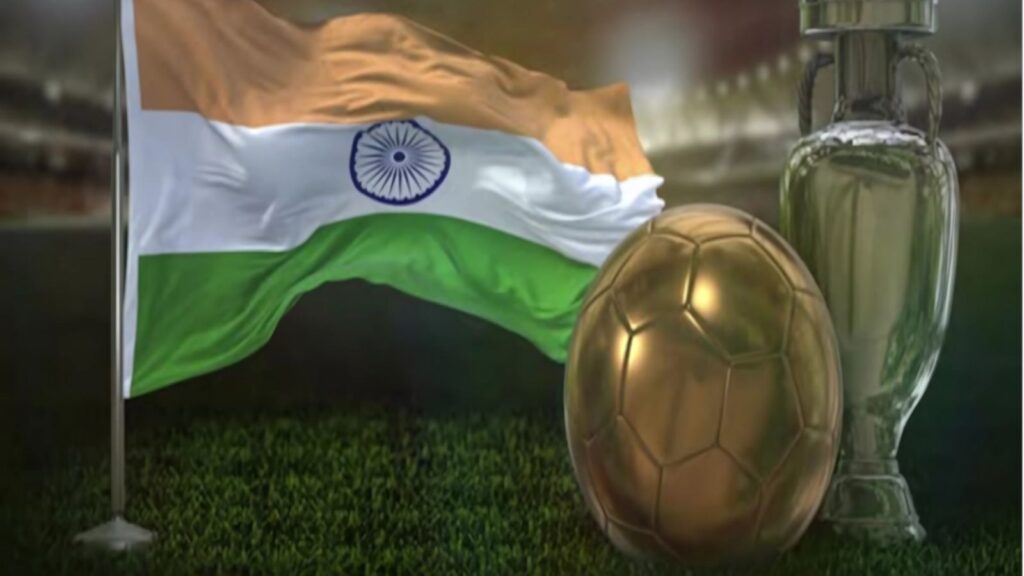
Indian football has seen consistent progress in recent years, driven by domestic growth, international collaborations, and well-structured development programs. As 2025 unfolds, the Indian football scene is alive with new milestones and exciting possibilities. From the upcoming SAFF Club Championship to the ongoing Indian Super League (ISL) season and international initiatives like “United We Play,” Indian football is gaining recognition on the world stage. Yet, significant challenges remain, requiring ongoing effort and innovation. Milestone 1: The Inaugural SAFF Club Championship A major highlight in Indian football this year is the announcement of the SAFF Club Championship, set to begin in 2026. Organized by the South Asian Football Federation, this regional tournament aims to enhance club football competitiveness across South Asia. Indian clubs, having dominated the domestic leagues, now have the opportunity to showcase their talent on a larger stage. Why It Matters: The SAFF Club Championship could serve as a stepping stone for Indian clubs to become stronger contenders in prestigious continental tournaments like the AFC Champions League. Indian Clubs’ Advantage: Teams such as Mumbai City FC, ATK Mohun Bagan, and Bengaluru FC, known for their professional management and growing fan-bases, are expected to be key contenders in this tournament. Challenges: Competing against well-established clubs from other nations will require Indian teams to strengthen their squads, improve tactical play, and align with international standards. Milestone 2: The Indian Super League (ISL) 2024-25 Season The ISL continues to be the heartbeat of Indian football, captivating audiences with star-studded teams and thrilling matches. The 2024-25 season has offered fans intense action and compelling story-lines. Notable Matches: Recent games, such as Mumbai City FC’s dramatic 3-2 victory over East Bengal, highlight the competitive nature of the league. Kerala Blasters’ resilience, despite playing with nine players, showcases the tactical maturity of Indian teams. Emerging Talent: The ISL serves as a platform for young talents to shine, with players like Sahal Abdul Samad and Vikram Pratap Singh making notable contributions. International Influence: Players such as Jon Toral, a La Masia graduate, and former Premier League star Saido Berahino, bring international experience to Indian clubs, enhancing the league’s profile and standard of play. Milestone 3: “United We Play” The “United We Play” initiative, led by Manchester United, is a groundbreaking effort to discover and nurture football talent across South Asia. In 2024, six young players from India, Nepal, Thailand, and the UAE were selected for a week-long training program at the iconic Old Tr-afford. Impact on Indian Talent: This initiative aligns with the All India Football Federation’s (AIFF) “Vision 2047” project, which aims to position India as a global football power by its centenary of independence. Growth Opportunities: Exposure to top-tier international training and mentor-ship from world-class coaches will fast-track the development of these young players. Future Outlook: Programs like “United We Play” pave the way for a steady pipeline of skilled players who could represent India on the world stage. Challenges in 2025 While these milestones indicate the progress of Indian football, several challenges need addressing for sustained growth: Infrastructure Development: Many grassroots facilities remain underdeveloped. Upgrading stadiums, training centers, and amenities is vital for nurturing young talent. Lack of Competitive Exposure: Indian teams still lag behind their Asian counterparts in international experience. Increasing participation in tournaments like the AFC Champions League is essential. Financial Stability: Despite rising investments, many clubs struggle with financial instability. A more sustainable ecosystem, supported by sponsor-ships, broadcasting revenue, and fan engagement, is crucial. Coaching and Tactical Development: While foreign coaches have introduced new ideas, the long-term focus should be on developing domestic coaching talent and refining tactical approaches. The Path Forward Indian football is at a pivotal moment. The milestones achieved in 2025 lay a solid foundation, but realizing global recognition will require careful planning and relentless execution. Key areas of focus include: Expanding Grassroots Programs: Initiatives like “United We Play” should be scaled up to scout and nurture talent from rural and urban areas alike. Investing in Women’s Football: Building on the success of the Indian Women’s League and promoting gender equality in sports. Strengthening Domestic Leagues: Enhancing the ISL’s competitiveness and self-sufficiency, with an eye on attracting global audiences. Integrating Technology: Leveraging data analytics and sports science to optimize player performance and tactical strategies. Conclusion The rise of Indian football in 2025 represents a story of ambition, resilience, and untapped potential. While the achievements of this year are significant, they are only the beginning. With continued investment, strategic vision, and passionate fan support, Indian football is poised to become a global force. The journey may be long, but the destination promises greatness, with the steps taken today shaping the legacy of tomorrow.
Mykhailo Mudryk: Doping Suspension and Personal Life Controversy
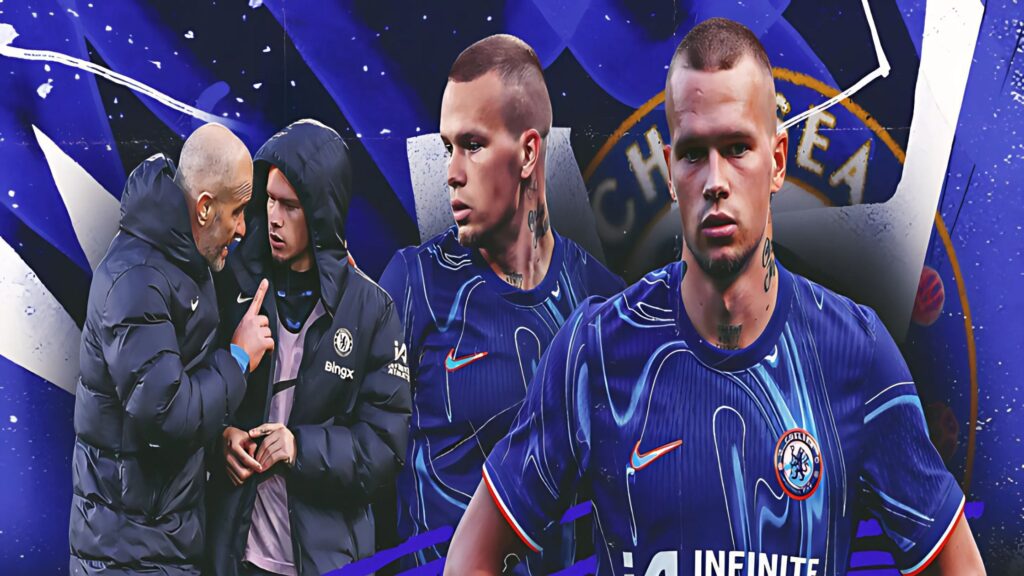
Mykhailo Mudryk, the talented Chelsea forward, has recently found himself at the center of two major controversies. On one hand, the Ukrainian international has been provisionally suspended due to a doping violation, with meldonium—the substance found in his system—being banned by the World Anti-Doping Agency (WADA). On the other, his personal life has been under scrutiny following reports of his split from Russian fitness model Violet-ta Bert, who is now rumored to be in a relationship with former Premier League player Weston McKennie. Doping Scandal: What We Know So Far Mudryk’s doping suspension has sent shock-waves through the football community. The substance found in his system, meldonium, was banned by WADA in 2016. Originally used to treat heart conditions, meldonium has been linked to enhancing performance and endurance, making it a substance of concern in sports. According to WADA, its use can provide an unfair advantage, which is why it remains prohibited.The issue came to light when Mudryk’s A-sample tested positive for meldonium. Although the player denies knowingly ingesting the substance, this positive test has led to a provisional suspension, casting a shadow over his career. Mudryk will now undergo a B-sample test, and if it confirms the presence of meldonium, he could face a ban of up to four years. Such a punishment could have long-lasting consequences for his football career and reputation. Chelsea manager Enzo Maresca has publicly backed Mudryk, expressing confidence in his innocence and offering support during the investigation. Maresca’s endorsement shows solidarity with the player, though it also reflects the uncertainty surrounding the case. If Mudryk is found guilty, it would not only impact his future but could also affect Chelsea’s long-term plans. Personal Life Drama: Mudryk and Violetta Bert While the doping scandal unfolds, Mudryk’s personal life has also attracted attention. Reports suggest that Mudryk has separated from his long-time partner, Russian fitness model Violet-ta Bert. Their relationship, which had been closely followed by fans and media, appears to have ended, with rumors now linking Bert to former Premier League player Weston McKennie.Although the exact reasons for their breakup remain unclear, the media has speculated on the potential emotional toll this personal shift may have on Mudryk. The pressure of dealing with a high-profile breakup, alongside the doping allegations, could affect Mudryk’s mental and emotional state, which in turn may impact his performances on the field. For the young forward, this combination of professional and personal struggles is particularly challenging as he faces the pressure to prove himself in the Premier League. The media attention on both his doping suspension and personal life only adds to the stress, complicating Mudryk’s ability to maintain focus on his football career. Consequences for Chelsea and Mudryk’s Future If Mudryk’s doping suspension is confirmed, Chelsea will face a difficult decision. With the possibility of a lengthy ban, the club must decide whether to continue to support him or cut ties depending on the investigation’s outcome. Although Mudryk’s potential is unquestionable, his ability to adjust to the Premier League has been mixed, and this controversy adds further uncertainty to his future with the club.Mudryk, who made a high-profile transfer to Chelsea, has shown flashes of his brilliance but has yet to fully settle into the team. His future at Chelsea hinges not only on the results of his doping case but also on his ability to navigate these personal and professional challenges moving forward. Support for Players During Controversy Maraca’s public support for Mudryk amid the doping allegations aligns with a broader trend in football, where managers are increasingly choosing to stand by their players during difficult times. While the gravity of doping offenses cannot be understated, it is clear that Chelsea is providing Mudryk with the benefit of the doubt until the investigation concludes.The club’s response to this situation will also have broader implications for its reputation and how it handles similar controversies in the future. As football becomes more globalized and subject to media scrutiny, Chelsea’s handling of the Mudryk case will likely be closely observed by fans, analysts, and other clubs. Looking Ahead: What’s Next for Mudryk? At this point, Mudryk’s future remains uncertain. The doping suspension could lead to a prolonged absence from the pitch, and the outcome of the B-sample test will determine whether the allegations hold true. On the personal front, Mudryk must navigate the emotional fallout of his breakup, which, combined with the doping controversy, could significantly impact his mental and emotional well-being. For Chelsea, it’s about maintaining focus on the team’s overall success while providing support to a player going through a crisis. For Mudryk, it’s about clearing his name and proving himself both on and off the field.As the investigation unfolds, football fans and observers will be closely following the developments. Will Mudryk emerge from this scandal stronger, or will it mark a turning point in his career? Only time will tell, but one thing is certain, the road ahead will be filled with challenges for the young forward.
The Path to UEFA Euro 2028: Predictions and Anticipations
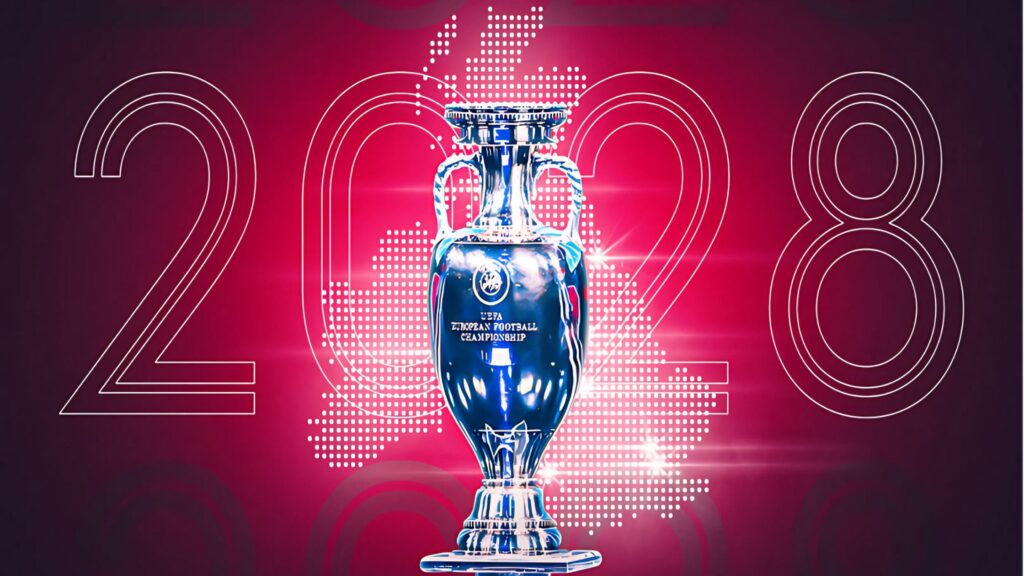
The UEFA European Championship stands as one of the premier events in international football, and the journey to UEFA Euro 2028 is already stirring up excitement across Europe. As top teams start preparing for qualification, numerous narratives are emerging—from front-runners and potential surprise packages to evolving tactics and team dynamics. This blog will delve into these aspects, offering a glimpse of what we can expect from one of the most anticipated tournaments in the footballing world. Qualification Path: What to Expect The qualification journey for Euro 2028 will be more than just a fight for the coveted spots in the final tournament. With fierce competition across Europe, the qualification process will see 24 teams battling it out. Teams will compete in group stages, with the leading sides securing automatic qualification, while others will fight for a place via playoffs. This promises to create a high-stakes atmosphere as teams strive to ensure their spot in the tournament. Early Favorites: Which Teams Are Likely to Shine? France – The Continued Evolution of a Powerhouse: France enters the race for Euro 2028 with a squad brimming with talent, including the likes of Kylian Mbappe, Antoine Griezmann, and N Golo Kante. After finishing as runners-up in the 2022 World Cup, France remains one of the primary favorites for the Euro 2028 title. Their rich footballing heritage, combined with a robust youth pipeline, makes them one of the most formidable teams to watch. Under the guidance of Didi-er Deschamps, expect a balanced and tactically sharp team ready to challenge for the top honors. England – Can South-gate Build on Past Successes: England’s memorable runs to the semifinals in the 2018 World Cup and second place in Euro 2020 have set high expectations for the national team. With stars like Harry Kane, Phil Foden, and Bu-kayo Saka, the team boasts incredible depth. England’s tactical approach, blending solid defense with attacking flair, positions them as one of the favorites. Germany – A Fresh Start Under Flick: After a disappointing 2022 World Cup exit, Germany is focused on rebuilding under Hansi Flick. The team has an intriguing blend of seasoned professionals, such as Thomas Muller and Manuel Neuer, and a promising new generation led by Jamal Musiala and Joshua Kimmich. Germany’s high-pressing, possession-based style will make them a tough competitor, and with Flick’s tactical acumen, they could make a significant impact in Euro 2028. Spain – A Blend of Youth and Tactical Innovation: Spain has shifted its focus to a younger, more dynamic squad following their dominant years in the late 2000s and early 2010s. The emergence of young talents like Gavi, Pedri, and Ansu Fati has reinvigorated Spain’s play, moving away from their trademark tiki-taka in favor of a more direct and attacking style. The combination of youth and experience positions Spain as a dark horse that could surprise many in the tournament. Italy – Defending Champions Ready for More: After winning Euro 2020, Italy will be keen to defend their title. While they face the challenge of rebuilding following their failure to qualify for the 2022 World Cup, their core group of players—such as Federico Chiesa and Nicolo Barella—still represents a powerful unit. Italy’s tactical discipline and strong counter-attacking strategy will ensure they remain tough to beat in Euro 2028. Underdogs to Watch: Who Could Surprise? While the established footballing giants take center stage, international tournaments often see surprise teams that challenge the expected outcome. Euro 2028 could bring new stories. Belgium – A Final Push for the Golden Generation: Belgium’s “Golden Generation” has been on the verge of glory for years but has yet to win a major tournament. With key players like Kevin De Bruyne, Romelu Lukaku, and Thibaut Courtois still at their peak, this might be Belgium’s final opportunity for success. Despite the age of some squad members, their undeniable talent and tactical discipline will keep them in the conversation as contenders for the title. Portugal – A New Era After Ronaldo: As Cristiano Ronaldo’s international career winds down, Portugal’s focus has shifted to a new generation of stars. Players like Joao Felix, Bruno Fernandes, and Diogo Jota are leading the way, with the team boasting a balanced squad with attacking prowess. Under manager Roberto Martinez, Portugal could make a deep run, relying on their versatility and strong tactical foundation to challenge for Euro 2028. Netherlands – A Rising Force: After a strong World Cup showing in 2022, the Netherlands is looking to make a significant mark on Euro 2028. With a mix of experienced stars, such as Virgil van Dijk and Frenkie de Jong, alongside youthful talent, the Dutch side has the potential to surprise. Their tactical approach, emphasizing possession and high pressing, could make them a team to watch closely. Turkey – A Dark Horse in the Making: Turkey has quietly assembled a competitive squad in recent years, with players like Hakan Çalhanoglu and Burak Yılmaz leading the charge. Coupled with emerging talents such as Cengiz under and Ozan Kabak, Turkey could be a surprise package in Euro 2028. If they continue their upward trajectory and find consistency, they could pose a serious challenge to the established powers. Tactical Trends to Keep an Eye On Football tactics continue to evolve, and Euro 2028 will likely see new trends that influence how teams approach the competition: High-Pressing and Counter-Pressing: Teams like France, Germany, and Spain are focusing on high-pressing strategies, attempting to win back possession quickly. This aggressive approach forces opponents into mistakes and creates attacking opportunities, ensuring that Euro 2028 will feature fast, intense matches. Positional Play and Flexibility: The rigid tactical formations of the past are being replaced by more fluid positional play. Players are expected to adapt quickly to changing positions during matches. This evolving trend, led by Spain and the Netherlands, will add an exciting dimension to the way teams organize themselves on the field. Dynamic Wing Play and Fullbacks: The role of overlapping fullbacks and wide play has gained prominence, providing teams with width and creativity. Players like Kieran Trippier (England) and Joao Cancelo (Portugal) will be crucial in breaking
Bayern Munich’s Dominant Display in Friendly Match: A Strong Statement Ahead of Bundesliga Resumption
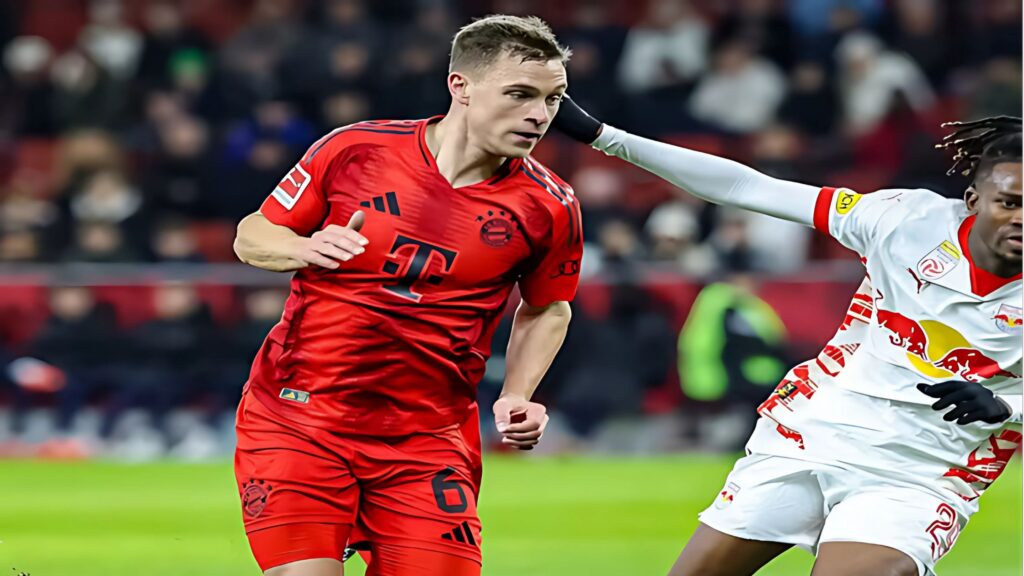
On January 7, 2025, Bayern Munich triumphed with an impressive 6-0 win over Red Bull Salzburg in a highly anticipated friendly, setting the stage for their return to Bundesliga action. The match, which was played in a charged atmosphere, underscored Bayer n readiness for the competitive challenges that lie ahead, with standout contributions from key players. A Clear Demonstration of Power Bayer n Munich’s commanding 6-0 victory highlighted their dominance throughout the game. From the outset, Bayer n controlled the tempo, outclassing Salzburg in every aspect. Their attacking play was fluid, inventive, and ruthless, while their defense held firm, ensuring Salzburg had little opportunity to make an impact. The team’s offensive potency was evident as they capitalized on every scoring opportunity. Key Players: Thomas Muller and Michael Olise Two players who particularly stood out in Bayern’s comprehensive win were Thomas Muller and Michael Olise, both of whom played pivotal roles with their clinical and influential performances. Thomas Muller’s Leadership and Contribution: Veteran forward Thomas Muller once again demonstrated his importance to Bayer n with an outstanding all-around performance. Renowned for his sharp footballing intelligence and excellent positioning, Muller took charge of Bayern’s attack. His timely runs and ability to link up play were crucial, and he provided both assists and goals to contribute to the team’s commanding display. Muller’s leadership was evident as he helped maintain Bayern’s high tempo and control throughout the match. Michael Olise’s Dynamic Presence: Young forward Michael Olise, who joined Bayer n in the summer, continued to impress with a dazzling performance. Olise’s pace, dribbling, and creativity were key in breaking down Salzburg’s defense. He contributed with a brilliant individual goal and an assist, further establishing himself as a significant threat in Bayern’s attack. Olise’s flair and skill in one-on-one situations highlight his potential to play a leading role for Bayern in both the Bundesliga and European competitions. Bayern’s Tactical Play Bayer n Munich’s tactical approach remained true to their usual high-pressing, possession-based style of play. The team focused on quick transitions and a high tempo in attack. They exhibited impressive tactical flexibility, seamlessly switching between aggressive pressing and maintaining control of possession. Manager Julian Nagelsmann’s focus on team chemistry and meticulous planning was evident as Bayer n executed their strategies effectively. Defensive Strength Though Bayern’s offensive capabilities were the main focus, their defensive stability was equally impressive. Salzburg struggled to create any meaningful chances, with Bayern’s defensive line—featuring players like Dayot Upamecano and Joshua Kimmich—keeping them at bay. Goalkeeper Manuel Neuer had little to do, which speaks volumes about the solid structure of Bayern’s defense. This resilience at the back will be essential as Bayer n gears up for the more demanding fixtures in the Bundesliga. Pre-Season Insights Bayer n Munich’s resounding 6-0 victory served as a strong reminder of their preparedness for the upcoming Bundesliga campaign. The squad appeared sharp, cohesive, and confident, blending experienced players like Muller with emerging talents such as Olise. Their performance against a quality opponent like Salzburg, even in a friendly, further reinforced their readiness for the competitive challenges ahead. Looking Forward: Bundesliga Battle As the Bundesliga resumes from its winter break, Bayer n Munich will be looking to extend their dominance in the domestic league. With the title race heating up, Bayer n will need to maintain this momentum and ensure they stay at the top. Their squad depth, tactical flexibility, and individual brilliance will be crucial in their pursuit of another Bundesliga title. Conclusion In summary, Bayer n Munich’s commanding 6-0 victory over Red Bull Salzburg showcased their attacking prowess and defensive discipline. Key players like Thomas Muller and Michael Olise played crucial roles in the win, reinforcing Bayern’s status as a formidable force in European football. With their form on full display, Bayer n Munich is ready to defend their Bundesliga title and make a strong push for further glory in 2025.
The 2025 Gaelic Football Season: A New Era of Attacking Play and Dynamic Action
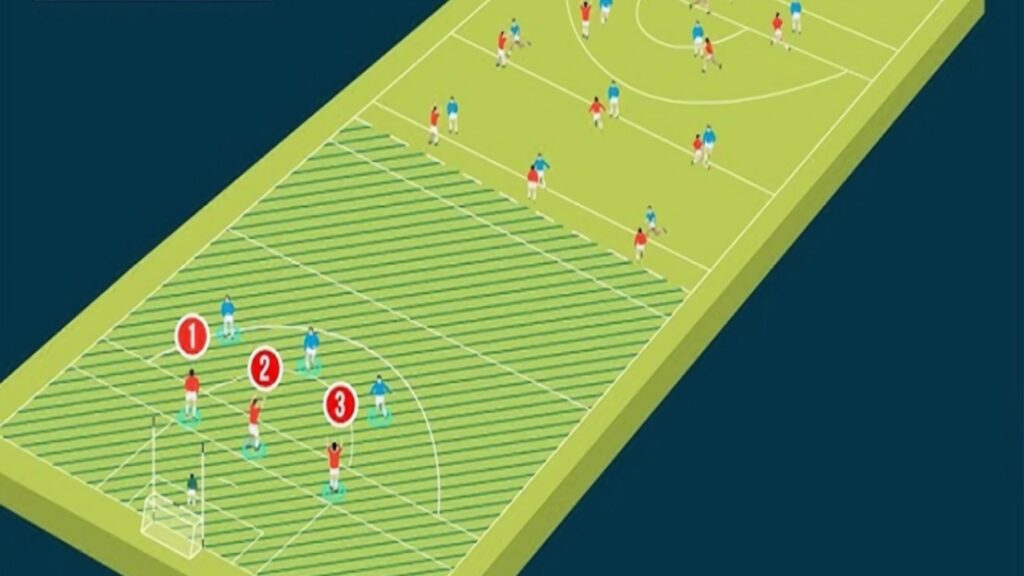
The 2025 Gaelic football season is set to bring significant changes to the game, primarily driven by new rule modifications aimed at making the sport faster, more dynamic, and appealing to both players and fans. Galway’s football manager, Padraic Joyce, has expressed his excitement for the upcoming season, forecasting a shift toward a more attacking style of play. Key Rule Changes The 3/3 Rule: One of the standout changes is the introduction of the “3/3 rule,” which limits the number of players each team can have in their defensive third of the field. This change is designed to create a balance between attack and defense, preventing teams from relying solely on defensive tactics and forcing them to actively engage in offensive play. Impact on Attack and Defense: The 3/3 rule encourages teams to move forward more quickly by limiting the number of players allowed in their defensive zone. This creates more space for attacking players and promotes faster transitions from defense to offense. Defenders will have less opportunity to clog up their own half, allowing attackers more room to operate. Faster, More Open Play: Teams are likely to adopt a more fluid approach, constantly shifting between defense and attack. Midfielders will play a pivotal role in linking the two phases, while forwards will have more chances to exploit defensive gaps. New Scoring System: Another significant change is the introduction of a new scoring system that rewards long-range two-pointers. This system incentive players to take risks and attempt shots from further out on the field. Instead of scoring just one point for shots within the scoring zone, players can earn two points for successfully converting long-range shots. Strategic Shifts: This rule is expected to alter attacking strategies, with teams seeking to take advantage of their players’ long-range shooting abilities. Forwards with strong kicking skills will be highly valued, and teams may structure their attacks to create opportunities for long-range shots, leading to a more varied and unpredictable game. Opening Up the Game: As players take more shots from distance, the areas around the goals could become less congested. This will force teams to adopt more expansive and creative attacking patterns, making the game less predictable and more entertaining. Expected Outcomes of the Rule Changes Increased Attacking Play: Given the 3/3 rule and the new scoring system that rewards long-range shots, Padraic Joyce’s prediction of a shift toward “completely attacking football” seems highly plausible. These changes will likely push teams to adopt more aggressive, offensive tactics, resulting in higher-scoring games and more exciting matches.Teams may experiment with new formations, shifting away from traditional defensive structures in favor of dynamic, aggressive setups. This could lead to an increase in counter-attacks, with teams exploiting open spaces during transitions. Growth in Skill Development: The new focus on long-range shooting will push players to develop their kicking range and accuracy, especially from challenging angles. This change is expected to emphasize individual skill, particularly in ball-striking and decision-making under pressure. Players may aim to become dual threats, capable of both creating plays and scoring from long distances. Changes in Team Dynamics: The 3/3 rule and revised scoring system may lead to shifts in defensive strategies. Teams that traditionally relied on dense defensive setups will need to adapt to the new rules, potentially experimenting with hybrid defensive units that can quickly transition into offensive plays. Midfielders will be central to this new style of play, as they will need to connect defense and attack more efficiently. Their ability to move the ball quickly and make smart decisions will be critical to the team’s overall success. Enhanced Fan Engagement These changes are expected to resonate with fans who enjoy a more open and attacking style of play. With more long-range shots, quicker transitions, and higher-scoring games, Gaelic football will likely become more thrilling and engaging. Spectators can expect to see more dynamic encounters, with teams taking risks and showcasing unconventional plays, keeping the game lively and unpredictable. Conclusion The 2025 Gaelic football season is poised to introduce a new era marked by attacking football, increased risk-taking, and excitement. The 3/3 rule and the revised scoring system are set to encourage more open play, challenging both teams and players to innovate. Padraic Joyce’s prediction of a move toward “completely attacking football” reflects the optimistic outlook surrounding these rule changes. If successfully implemented, these new rules could significantly enhance the sport’s dynamism, leading to thrilling and unpredictable matches that fans will love. The 2025 season could very well mark the beginning of an exciting and fast-paced chapter in Gaelic football’s history.
Indian Super League (ISL) 2024-25 Season: A Spectacle of Football Excellence
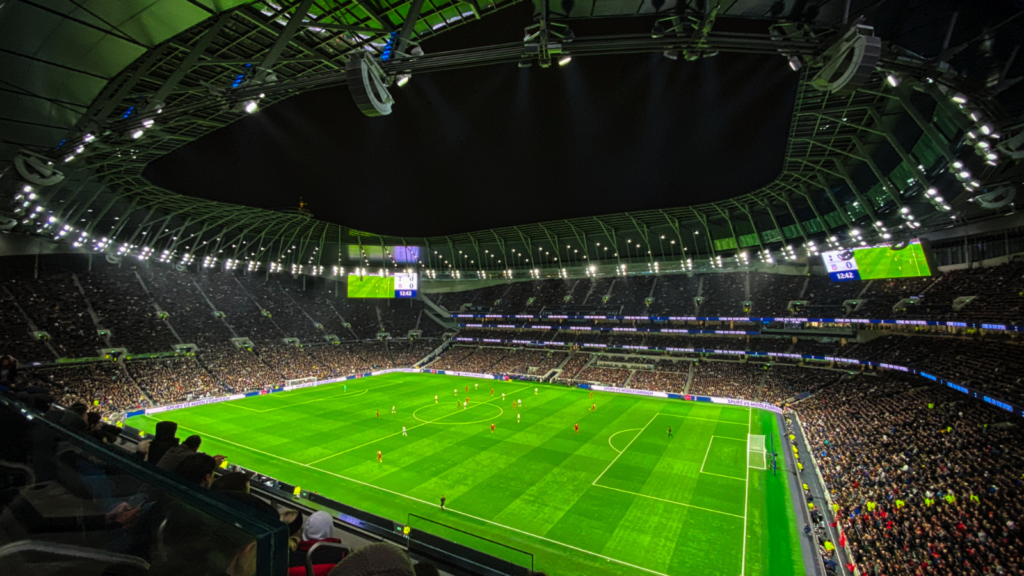
The 2024-25 season of the Indian Super League (ISL) has transformed into more than just a tournament—it’s a showcase of passion, talent, and ambition driving Indian football to new heights. This season has brought thrilling matches, fierce rivalries, and notable developments that continue to foster unity and pride among fans. Major Story-lines and Highlights Mohun Bagan vs. East Bengal: The Kolkata Derby remains the heart of Indian football, symbolizing the intense competition and emotional stakes tied to the sport.The buildup to this iconic rivalry has broken records in ticket sales and generated an unparalleled buzz across social media platforms.Both Mohun Bagan and East Bengal have entered the season with a focus on tactical brilliance and star power, setting the stage for one of the most talked-about match-ups in recent memory. Greater Parity Among Teams: The 2024-25 ISL season has seen increasing competition, with emerging teams challenging the dominance of traditional powerhouses.Bengaluru FC has rejuvenated its squad, with young talents stepping up to perform in high-stakes moments.Hyderabad FC and Mumbai City FC have maintained their reputations as formidable contenders through consistent and tactically sound performances. Kerala Blasters’ Groundbreaking Fan Initiative: Kerala Blasters’ introduction of a Fan Advisory Board has redefined the relationship between clubs and their supporters.Fan Participation,This initiative allows fans to influence the club’s decision-making process, making them active stakeholders in the club’s success.Inspiration Across Clubs,This bold move has sparked discussions on replicating fan-driven governance models in other ISL teams, setting a new standard for fan engagement in Indian sports. Focus on Talent Development and Infrastructure Nurturing Indian Talent: The ISL continues to play a vital role in cultivating domestic football talent.Grassroots Development, Clubs are heavily investing in youth academies and training programs, ensuring a steady influx of promising players.Emerging Stars, like Vikram Pratap Singh and Akash Mishra have been making headlines with their performances, earning attention both domestically and internationally. Upgrading Football Infrastructure: The league has significantly contributed to modernizing football facilities across the country.Stadiums are being upgraded to international standards, enhancing the fan experience and player performance.Advanced training facilities and sports science initiatives are helping players reach their full potential while extending their careers. Global Influence and Off-Field Innovations Bridging Indian and Global Football:The ISL continues to create opportunities for cross-cultural exchange and collaboration.Renowned international coaches are introducing advanced tactics and professional discipline to Indian football. International players not only raise the competitive level of the league but also mentor and inspire young Indian talent. Technological Advancements and Sustainability VAR Integration: The implementation of VAR (Video Assistant Referee) has ensured fairer decisions and added credibility to match outcomes. Sustainability Efforts: Clubs are adopting eco-friendly practices, such as effective waste management at stadiums and reducing their carbon footprint, aligning with global sustainability goals. Challenges on the Horizon Despite its impressive growth, the ISL still faces several challenges: Expanding Regional Reach: Efforts must continue to make football more popular in regions dominated by cricket. Financial Sustainability: Ensuring the long-term viability of all franchises requires innovative revenue models and financial planning. Competing on the Asian Stage: Indian clubs need to close the gap with Asian football powerhouses like Japan, South Korea, and Iran to make a mark in continental competitions. Looking Forward: Building a Footballing Legacy The 2024-25 ISL season marks a turning point in Indian football’s journey. World Cup Aspirations: By nurturing young talent and fostering a competitive environment, the league lays the groundwork for India’s dream of FIFA World Cup qualification. Cultural Shift: The ISL is gradually creating a footballing culture that challenges cricket’s dominance in India, attracting a younger, diverse fan-base. As the season unfolds, the ISL continues to deliver thrilling entertainment while shaping the future of Indian football. With fans, players, and clubs united in their vision, the league is on track to solidify its position as a beacon of growth, professionalism, and pride for Indian sports.
Emerging Talents in English Football in 2025: The Young Players Shaping the Future of Football
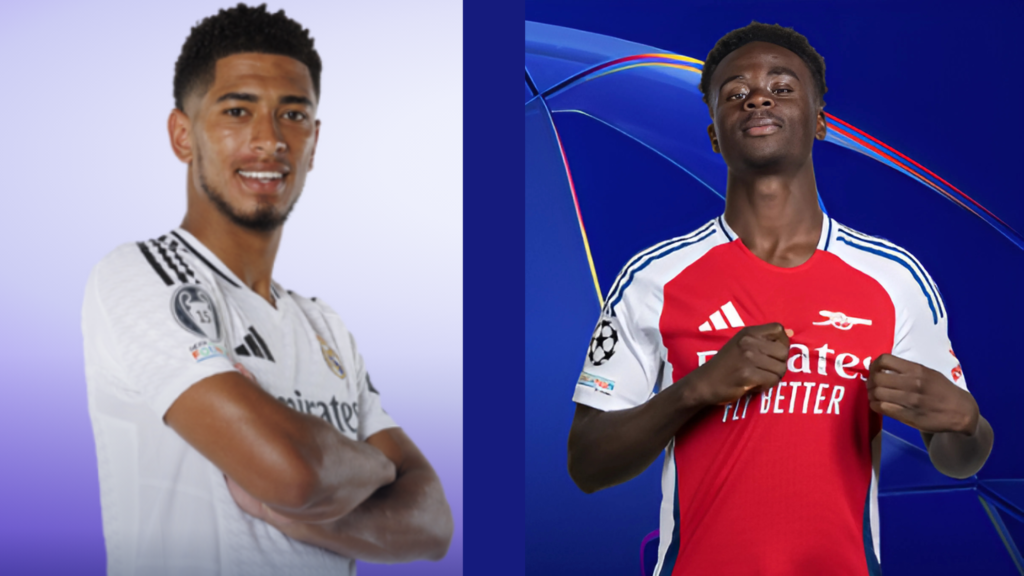
As we step into 2025, the spotlight in English football is increasingly focused on the rise of emerging young talents. With tactical styles continuously evolving and a growing emphasis on youth development, clubs are dedicating substantial resources to cultivating and promoting younger players. These rising stars have the potential to transform the future of football, not only in the Premier League but across Europe as well. In this blog, we explore the growing role of emerging talents in English football and examine how clubs are building their futures around these players. The Surge of Young Footballing Stars Over the last few years, there has been a notable increase in the number of young footballers breaking into the first teams of top Premier League clubs. Rather than spending heavily on established players, clubs are increasingly looking within their youth academies to find the next big names in football. Jude Bellingham (Real Madrid): Jude Bellingham, who first made his mark in the Premier League with Birmingham City and Borussia Dortmund, has truly cemented his status as one of the best young players in the world at Real Madrid. At just 20 years old, his maturity, technical skill, and vision are elevating the expectations for young midfielders. As one of the most in-demand talents globally, Bellingham’s performances for both Real Madrid and the England national team have set new standards. Bukayo Saka (Arsenal): At just 23, Arsenal’s Bukayo Saka is already a standout performer in the Premier League, showcasing impressive dribbling, creativity, and goal-scoring ability. His contributions have been vital to both Arsenal and England’s recent successes. A product of Arsenal’s academy, Saka exemplifies the value of nurturing homegrown talent in English football. His rapid rise suggests he could become one of the world’s top players in the years to come. Ethan Nwaneri (Arsenal): Ethan Nwaneri, who made history by becoming the youngest player ever to feature in the Premier League at just 15, is another young talent at Arsenal to watch. His maturity on the ball and his versatility as a midfielder have already attracted attention from football experts. If nurtured properly by Arsenal, Nwaneri could become a key player for both the club and the national team in the near future. Cade Cowell (FC Barcelona): Though he currently plays for FC Barcelona, American forward Cade Cowell is another exciting young talent to watch in European football. His transition from Major League Soccer to one of the world’s most prestigious clubs signifies a growing trend of young American players making an impact in Europe. Cowell’s speed, strength, and goal-scoring ability could help redefine the perception of American talent on the international football scene. James McAtee (Manchester City): James McAtee, currently on loan at Sheffield United, is another young English talent on the rise. Known for his creative style and technical skill, McAtee has emerged as one of Manchester City’s brightest academy products in recent years. His performances in the Championship have demonstrated his potential, and once he returns to Manchester City, he could become a crucial part of Pep Guardiola’s squad. Clubs’ Investment in Youth Development Premier League clubs are increasingly prioritizing youth development, realizing the long-term value of developing homegrown talent. Established clubs like Manchester City, Chelsea, and Liverpool have a tradition of focusing on youth development while complementing their squads with experienced players to guide younger prospects. Arsenal’s Focus on Youth Development:Arsenal is leading the way in promoting young players, with their academy producing talents like Saka, Emile Smith Rowe, and Nwaneri. The club’s strategic approach to scouting and developing young talent, alongside Mikel Arteta’s trust in these players, has allowed them to shine in the Premier League. Arteta’s faith in youth has been crucial in Arsenal’s rise as one of the most exciting teams in Europe. Chelsea’s Youth Revolution:Since Todd Boehly’s takeover in 2022, Chelsea has undertaken a significant shift towards prioritizing young talent. The club has invested heavily in their academy and made high-profile signings like Christopher Nkunku, Mykhailo Mudryk, and Malo Gusto. Chelsea’s future success will largely depend on how these emerging stars evolve and integrate into the senior squad. Liverpool’s Youth Investment:Under Jurgen Klopp, Liverpool has embraced the importance of youth development. Players such as Harvey Elliott and Curtis Jones have become integral parts of the team, demonstrating that Klopp is willing to trust young players in key roles. Liverpool’s commitment to developing young talent, combined with their strategic approach, suggests that the club’s future success will blend both emerging stars and experienced professionals. The Future of Football: How Emerging Talents Will Shape the Game As emerging talents continue to make an impact in football, they are beginning to influence the way the game is played. These young players are not merely filling spots in teams but are becoming key figures who could lead their clubs to success. The trend towards faster, more dynamic football is driven by the energy and innovation brought by these young stars. Redefining Tactical Systems: With the rise of players like Bellingham and Saka, clubs are expected to adapt their tactical approaches. We may see more fluid and versatile systems where players can operate across multiple roles. This shift away from rigid formations towards greater tactical flexibility will challenge traditional footballing norms, with managers needing to become more strategic in nurturing these young players’ development. The Surge of International Talent: Beyond domestic players, young international talents from countries like Brazil, Argentina, and the U.S. are becoming more influential in European football. As the global talent pool continues to expand, European clubs are keen to secure the services of rising stars before they make their major breakthrough. This trend will further diversify the playing styles and tactical approaches seen across Europe’s top leagues. Conclusion The future of English football looks incredibly promising, with an impressive array of emerging talents ready to shape the game in 2025 and beyond. Clubs are increasingly investing in their youth academies, and we’re already seeing the fruits of this labor with players like Bellingham, Saka, and
Premier League January Transfer Window: A Tactical Reshuffle
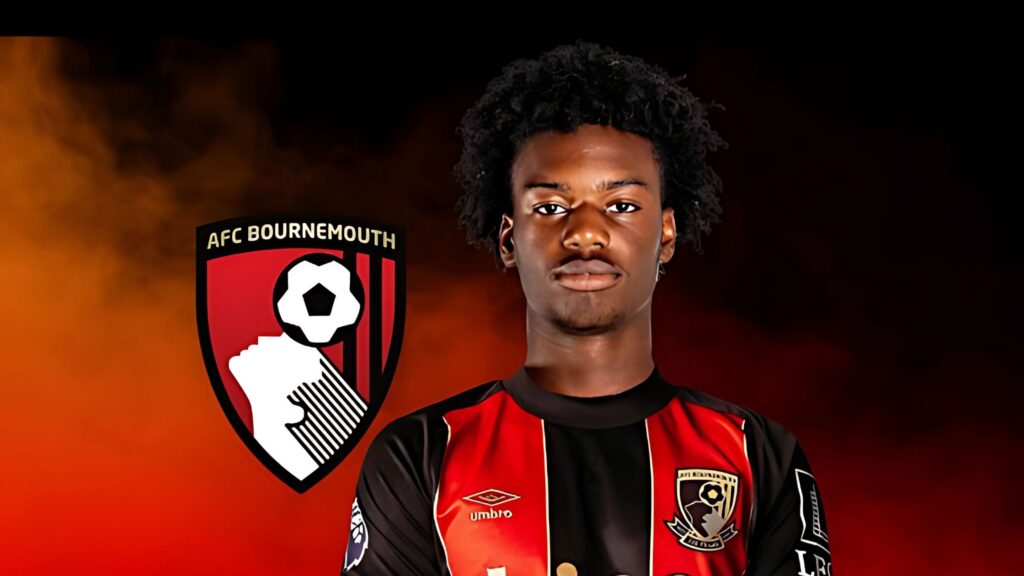
The January transfer window is a crucial period in the Premier League, allowing clubs to evaluate their squads and address any gaps identified during the first half of the season. As of January 2025, this year’s window has already generated excitement and speculation, with teams striving to make impact signings to strengthen their campaigns. Bournemouth’s Bold Move: Matai Akinmboni Signing Among the early notable transfers, Bournemouth’s acquisition of Matai Akinmboni from DC United stands out. The 17-year-old defender, celebrated as a rising talent in Major League Soccer, brings a blend of youth, potential, and versatility to Bournemouth’s defensive lineup. This move highlights a growing trend of Premier League clubs identifying emerging talent in North America, leveraging the region’s expanding football infrastructure. Akinmboni’s signing reflects Bournemouth’s commitment to nurturing young talent while addressing immediate needs in defense. Premier League Clubs’ Key Objectives While Bournemouth’s move has drawn attention, other clubs are also making strategic efforts to enhance their squads: Addressing Weak Points: Many clubs are focusing on reinforcing areas plagued by injuries, inconsistent performances, or squad imbalances. For instance, Tottenham Hot-spur is reportedly exploring goalkeeper options due to injuries among their top keepers. Similarly, Manchester United is seeking a dynamic striker, with Victor Osimhen emerging as a prominent target. Utilizing the Loan Market: The loan market continues to be a valuable tool, particularly for clubs seeking temporary solutions or aiming to free up wages by offloading fringe players. Chelsea and Arsenal have been active in this area, reviewing the performances of their young talents on loan and considering potential recalls. Fostering Youth Development: Clubs like Brighton & Hove Albion, renowned for their effective recruitment strategies, remain focused on integrating young players from lesser-known leagues. Brighton’s ability to identify and develop talent has become a blueprint for other mid-table teams. Reinforcing Depth for Title Contenders: For top-tier clubs like Manchester City and Arsenal, the emphasis is on adding squad depth to sustain challenges across multiple competitions. Arsenal, for instance, is rumoured to be pursuing midfield reinforcements to support their title bid and Champions League aspirations. Challenges of the January Window The January transfer window is fraught with challenges, including inflated prices and the limited availability of elite players. Clubs must strike a balance between addressing immediate needs and considering the long-term implications of their acquisitions. Overpaying for short-term solutions or disrupting team dynamics with ill-fitting signings can have adverse effects. Emerging Trends in the Market This year’s transfer activity underscores several key trends: Versatility in Players: Teams are prioritizing signings capable of operating across multiple positions, providing tactical flexibility. Data-Driven Scouting: Advanced analytics and scouting technologies are playing an increasingly significant role in player identification. Investment in Youth: A focus on acquiring young players with high potential aligns with many clubs’ financial sustainability goals. Anticipations for the Remainder of the Window As the window progresses, marquee transfers are likely to dominate headlines. Relegation-threatened teams are expected to make bold moves for experienced players, while title contenders may secure high-profile signings to maintain momentum. The final days of the window often bring a surge of activity, marked by last-minute deals and intense negotiations. Conclusion The January transfer window offers both opportunities and risks for Premier League clubs. For fans, it’s a period filled with anticipation and speculation as new arrivals aim to transform their teams’ fortunes. With the second half of the season looming, the choices made during this window could prove decisive in shaping the league’s ultimate outcomes.
